-
 Bitcoin
Bitcoin $104,436.0103
3.60% -
 Ethereum
Ethereum $2,491.6657
3.05% -
 Tether USDt
Tether USDt $1.0006
0.04% -
 XRP
XRP $2.1740
4.48% -
 BNB
BNB $645.8371
2.31% -
 Solana
Solana $149.3142
4.57% -
 USDC
USDC $0.9998
-0.02% -
 Dogecoin
Dogecoin $0.1795
5.64% -
 TRON
TRON $0.2771
3.74% -
 Cardano
Cardano $0.6614
6.06% -
 Hyperliquid
Hyperliquid $33.8009
1.52% -
 Sui
Sui $3.1743
8.89% -
 Chainlink
Chainlink $13.5386
5.87% -
 UNUS SED LEO
UNUS SED LEO $8.9443
0.94% -
 Stellar
Stellar $0.2636
3.58% -
 Avalanche
Avalanche $19.4741
4.96% -
 Bitcoin Cash
Bitcoin Cash $396.1126
4.35% -
 Toncoin
Toncoin $3.1421
3.62% -
 Shiba Inu
Shiba Inu $0.0...01243
3.95% -
 Hedera
Hedera $0.1650
4.90% -
 Litecoin
Litecoin $87.3851
6.11% -
 Polkadot
Polkadot $3.8884
2.68% -
 Monero
Monero $323.1949
3.06% -
 Ethena USDe
Ethena USDe $1.0014
0.06% -
 Bitget Token
Bitget Token $4.5971
1.55% -
 Dai
Dai $0.9999
-0.01% -
 Pepe
Pepe $0.0...01107
5.40% -
 Pi
Pi $0.6195
1.22% -
 Aave
Aave $252.7997
4.12% -
 Uniswap
Uniswap $6.0319
3.01%
How to identify the EMV divergence phenomenon? Will it reverse after diverging from the price?
EMV divergence, a key indicator for traders, signals potential price reversals when it diverges from price, but confirmation with other indicators is crucial.
Jun 05, 2025 at 10:56 pm
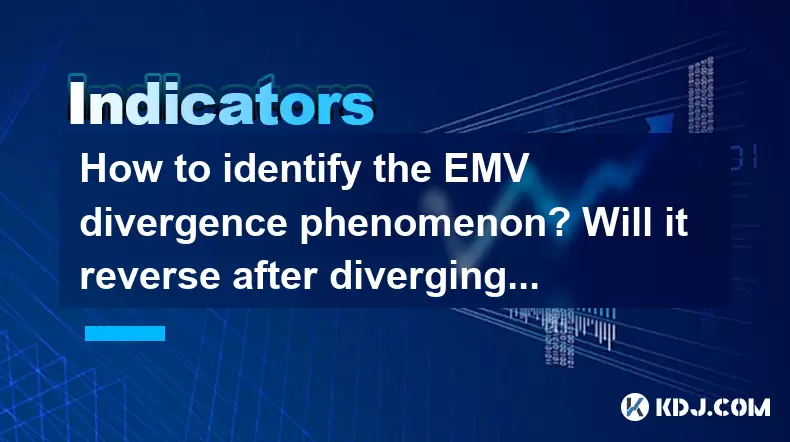
Understanding the EMV Divergence Phenomenon
The Ease of Movement Value (EMV) is a technical indicator used by traders to assess the relationship between price changes and volume. When the EMV diverges from the price, it suggests a potential shift in market momentum. This phenomenon, known as EMV divergence, can provide valuable insights into future price movements. In this article, we will explore how to identify EMV divergence and whether it typically reverses after diverging from the price.
What is the Ease of Movement Value (EMV)?
The Ease of Movement Value (EMV) is calculated to measure the ease with which prices move up or down. The formula involves the relationship between price change and volume, and it is typically represented as a line on a chart. The EMV can help traders identify periods where prices are moving with relative ease or difficulty, which can signal potential trends or reversals.
Identifying EMV Divergence
EMV divergence occurs when the direction of the EMV line does not match the direction of the price movement. There are two types of EMV divergence: bullish divergence and bearish divergence.
- Bullish Divergence: This occurs when the price is making lower lows, but the EMV is making higher lows. It suggests that the downward price momentum is weakening, and a potential bullish reversal may be on the horizon.
- Bearish Divergence: This occurs when the price is making higher highs, but the EMV is making lower highs. It indicates that the upward price momentum is weakening, and a potential bearish reversal may be approaching.
To identify EMV divergence, follow these steps:
- Plot the EMV on your chart: Ensure that the EMV indicator is visible on your trading platform.
- Observe the price movement: Identify significant highs and lows in the price action.
- Compare the EMV to the price: Look for instances where the EMV line is moving in the opposite direction of the price.
- Confirm the divergence: Ensure that the divergence is consistent over multiple periods to avoid false signals.
Examples of EMV Divergence in Cryptocurrency Markets
Let's look at a couple of examples to illustrate how EMV divergence can be identified in the cryptocurrency market.
- Bitcoin (BTC) Example: Suppose Bitcoin's price is steadily declining, forming lower lows. However, the EMV line is showing higher lows during the same period. This bullish divergence suggests that the selling pressure is weakening, and a potential price reversal may occur.
- Ethereum (ETH) Example: Imagine Ethereum's price is rising, making higher highs. Meanwhile, the EMV line is showing lower highs. This bearish divergence indicates that the buying pressure is diminishing, and a potential price reversal to the downside may be imminent.
Does EMV Divergence Reverse After Diverging from the Price?
The question of whether EMV divergence will reverse after diverging from the price is not straightforward. While divergence can often signal a potential reversal, it does not guarantee one. Several factors can influence whether a divergence leads to a reversal:
- Market Sentiment: Strong bullish or bearish sentiment can override the signals provided by the EMV.
- Volume: Significant changes in trading volume can affect the validity of the EMV divergence.
- Other Indicators: Confirmation from other technical indicators, such as the Relative Strength Index (RSI) or Moving Average Convergence Divergence (MACD), can increase the likelihood of a reversal.
In practice, traders often look for additional confirmation before acting on an EMV divergence. Here are some steps to assess whether a divergence might lead to a reversal:
- Monitor the EMV and Price: Continue to observe the EMV and price movements to see if the divergence persists.
- Check Volume: Look for changes in trading volume that may support or contradict the divergence.
- Use Additional Indicators: Confirm the divergence with other technical indicators to increase the probability of a reversal.
- Set Stop-Loss Orders: Implement stop-loss orders to manage risk if the anticipated reversal does not occur.
Practical Application of EMV Divergence in Trading
Traders can use EMV divergence as part of their trading strategy to identify potential entry and exit points. Here's how to apply EMV divergence in a trading context:
- Entry Points: When a bullish divergence is identified, traders might consider entering a long position, anticipating a price reversal to the upside. Conversely, a bearish divergence could signal an opportunity to enter a short position, expecting a price reversal to the downside.
- Exit Points: If a trader is already in a position, identifying an EMV divergence can help determine when to exit the trade. For example, a bullish divergence in a downtrend might prompt a trader to close a short position, while a bearish divergence in an uptrend could signal the time to close a long position.
Using EMV Divergence with Other Indicators
To enhance the effectiveness of EMV divergence, traders often combine it with other technical indicators. Here are some common combinations:
- EMV and RSI: The Relative Strength Index (RSI) can confirm overbought or oversold conditions that align with EMV divergence. For instance, a bullish EMV divergence accompanied by an RSI moving out of oversold territory can strengthen the case for a potential reversal.
- EMV and MACD: The Moving Average Convergence Divergence (MACD) can provide additional momentum signals. A bearish EMV divergence supported by a bearish MACD crossover can increase the confidence in a potential downward reversal.
- EMV and Volume: Monitoring volume alongside EMV divergence can help validate the strength of the divergence. A bullish EMV divergence with increasing volume can be a more reliable signal than one with declining volume.
Frequently Asked Questions
Q: Can EMV divergence be used for all types of cryptocurrencies?
A: Yes, EMV divergence can be applied to all types of cryptocurrencies, as it is a technical indicator based on price and volume data. However, the effectiveness of EMV divergence may vary depending on the liquidity and volatility of the specific cryptocurrency.
Q: How often should I check for EMV divergence?
A: The frequency of checking for EMV divergence depends on your trading style. Day traders might check for divergence multiple times throughout the day, while swing traders might check daily or weekly charts. It's important to align the frequency with your trading timeframe and strategy.
Q: Is EMV divergence more reliable in certain market conditions?
A: EMV divergence can be more reliable in trending markets, where clear price movements and volume patterns are more evident. In choppy or sideways markets, the signals from EMV divergence might be less reliable due to the lack of clear trends.
Q: Can EMV divergence be used in conjunction with fundamental analysis?
A: While EMV divergence is a technical indicator, it can be used alongside fundamental analysis. Fundamental factors, such as news events or changes in project development, can influence the likelihood of a divergence leading to a reversal. Combining both types of analysis can provide a more comprehensive view of potential price movements.
Disclaimer:info@kdj.com
The information provided is not trading advice. kdj.com does not assume any responsibility for any investments made based on the information provided in this article. Cryptocurrencies are highly volatile and it is highly recommended that you invest with caution after thorough research!
If you believe that the content used on this website infringes your copyright, please contact us immediately (info@kdj.com) and we will delete it promptly.
- Pi Network Ecosystem Announcement to Coincide with Consensus 2025
- 2025-06-07 05:30:12
- Injective Protocol will conduct an AMA on X on May 13th, offering a detailed overview of the rapid expansion of iAssets
- 2025-06-07 05:30:12
- Bitcoin (BTC) Mining Just Got Easy: Introducing Bitcoin Solaris
- 2025-06-07 05:25:13
- Bitcoin (BTC) Realized Cap Beats Records, Eyes $900B as Market Lays Foundations for Breakout
- 2025-06-07 05:25:13
- Solana (SOL) Price Eyes $180 as Bullish Momentum Strengthens
- 2025-06-07 05:20:13
- TRUMP Price Prediction: By 10% to $13.29 as Bitcoin (BTC) Nears $100,000
- 2025-06-07 05:20:13
Related knowledge
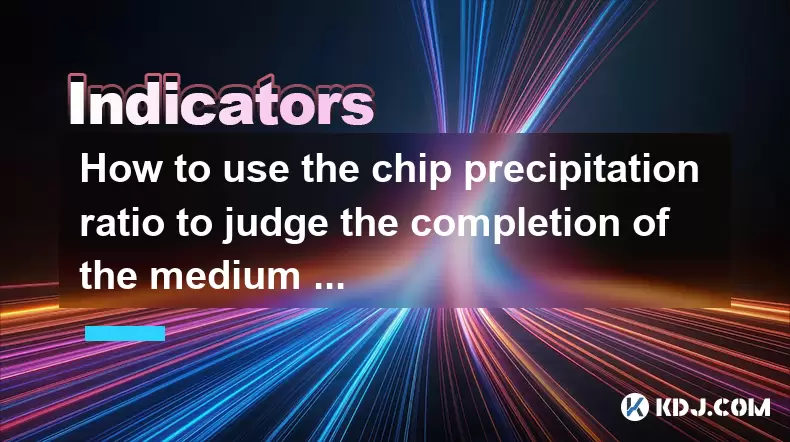
How to use the chip precipitation ratio to judge the completion of the medium and long-term bottom construction?
Jun 04,2025 at 03:36am
The chip precipitation ratio is a crucial metric used by investors to assess the accumulation of chips (or shares) at different price levels over time. This ratio helps in understanding the distribution of chips and can be a powerful tool for determining the completion of medium and long-term bottom construction in the cryptocurrency market. By analyzin...
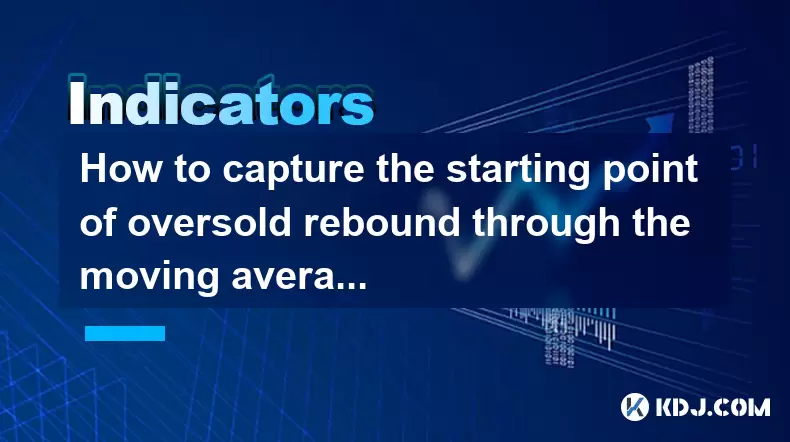
How to capture the starting point of oversold rebound through the moving average gravity reversal strategy?
Jun 04,2025 at 01:01pm
The moving average gravity reversal strategy is a sophisticated approach used by traders to identify potential entry points for buying cryptocurrencies when they are considered oversold. This strategy leverages the concept of moving averages to pinpoint moments when a cryptocurrency might be poised for a rebound. In this article, we will delve into the ...
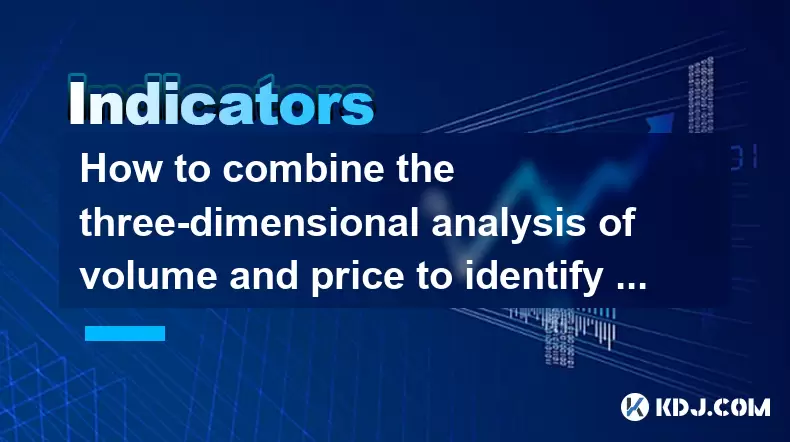
How to combine the three-dimensional analysis of volume and price to identify the golden buying point of breakthrough and retracement?
Jun 03,2025 at 11:42pm
In the dynamic world of cryptocurrencies, identifying the optimal buying points is crucial for maximizing profits and minimizing risks. One effective method to achieve this is by combining three-dimensional analysis of volume and price to pinpoint the golden buying points during breakouts and retracements. This article will delve into how to use this ap...
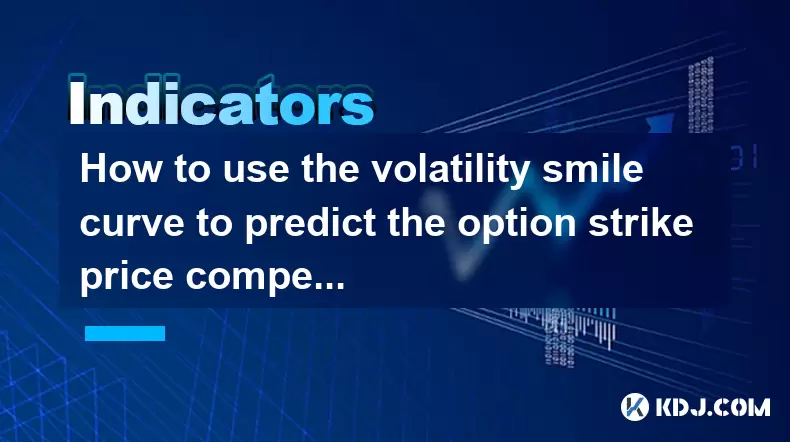
How to use the volatility smile curve to predict the option strike price competition area?
Jun 06,2025 at 01:01pm
The volatility smile curve is a graphical representation that shows the implied volatility of options across different strike prices for a given expiration date. It is called a 'smile' because the curve often takes the shape of a smile, with higher implied volatilities for options that are deep in-the-money or deep out-of-the-money, and lower implied vo...
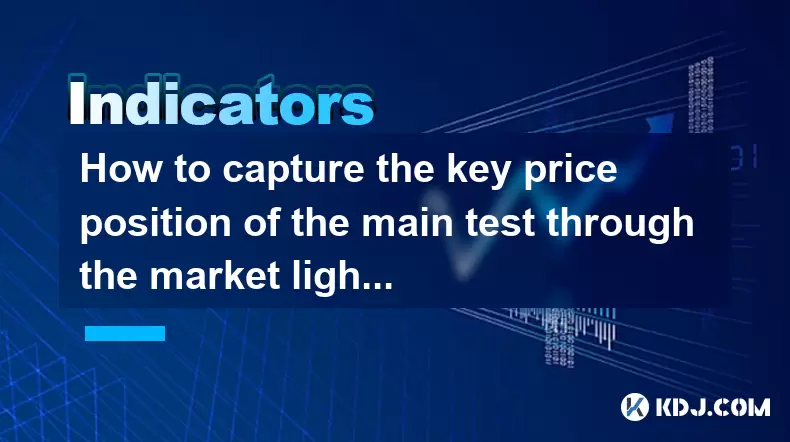
How to capture the key price position of the main test through the market lightning chart?
Jun 02,2025 at 06:07pm
Introduction to Market Lightning ChartThe market lightning chart is a powerful tool used by cryptocurrency traders to visualize price movements and identify key price positions. This chart type provides a detailed view of market activity, allowing traders to spot trends, reversals, and other significant price levels quickly. By understanding how to use ...
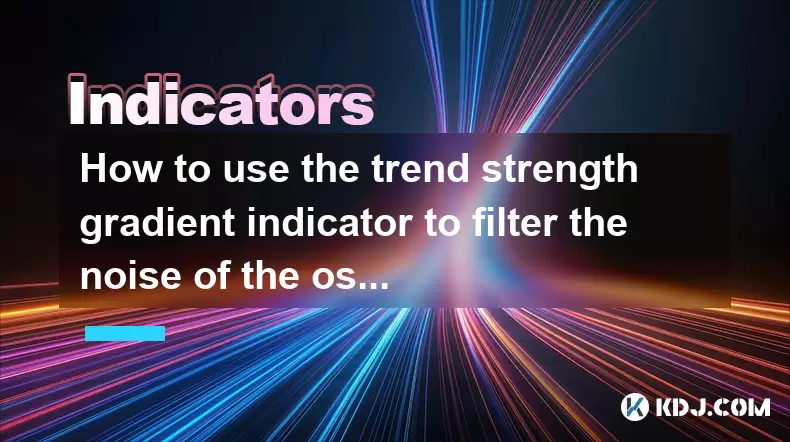
How to use the trend strength gradient indicator to filter the noise of the oscillating market?
Jun 06,2025 at 06:15pm
The trend strength gradient indicator is a powerful tool used by cryptocurrency traders to analyze market trends and filter out the noise that often accompanies oscillating markets. This indicator helps traders identify the strength of a trend, enabling them to make more informed decisions. In this article, we will explore how to effectively use the tre...

How to use the chip precipitation ratio to judge the completion of the medium and long-term bottom construction?
Jun 04,2025 at 03:36am
The chip precipitation ratio is a crucial metric used by investors to assess the accumulation of chips (or shares) at different price levels over time. This ratio helps in understanding the distribution of chips and can be a powerful tool for determining the completion of medium and long-term bottom construction in the cryptocurrency market. By analyzin...

How to capture the starting point of oversold rebound through the moving average gravity reversal strategy?
Jun 04,2025 at 01:01pm
The moving average gravity reversal strategy is a sophisticated approach used by traders to identify potential entry points for buying cryptocurrencies when they are considered oversold. This strategy leverages the concept of moving averages to pinpoint moments when a cryptocurrency might be poised for a rebound. In this article, we will delve into the ...

How to combine the three-dimensional analysis of volume and price to identify the golden buying point of breakthrough and retracement?
Jun 03,2025 at 11:42pm
In the dynamic world of cryptocurrencies, identifying the optimal buying points is crucial for maximizing profits and minimizing risks. One effective method to achieve this is by combining three-dimensional analysis of volume and price to pinpoint the golden buying points during breakouts and retracements. This article will delve into how to use this ap...

How to use the volatility smile curve to predict the option strike price competition area?
Jun 06,2025 at 01:01pm
The volatility smile curve is a graphical representation that shows the implied volatility of options across different strike prices for a given expiration date. It is called a 'smile' because the curve often takes the shape of a smile, with higher implied volatilities for options that are deep in-the-money or deep out-of-the-money, and lower implied vo...

How to capture the key price position of the main test through the market lightning chart?
Jun 02,2025 at 06:07pm
Introduction to Market Lightning ChartThe market lightning chart is a powerful tool used by cryptocurrency traders to visualize price movements and identify key price positions. This chart type provides a detailed view of market activity, allowing traders to spot trends, reversals, and other significant price levels quickly. By understanding how to use ...

How to use the trend strength gradient indicator to filter the noise of the oscillating market?
Jun 06,2025 at 06:15pm
The trend strength gradient indicator is a powerful tool used by cryptocurrency traders to analyze market trends and filter out the noise that often accompanies oscillating markets. This indicator helps traders identify the strength of a trend, enabling them to make more informed decisions. In this article, we will explore how to effectively use the tre...
See all articles

























































































